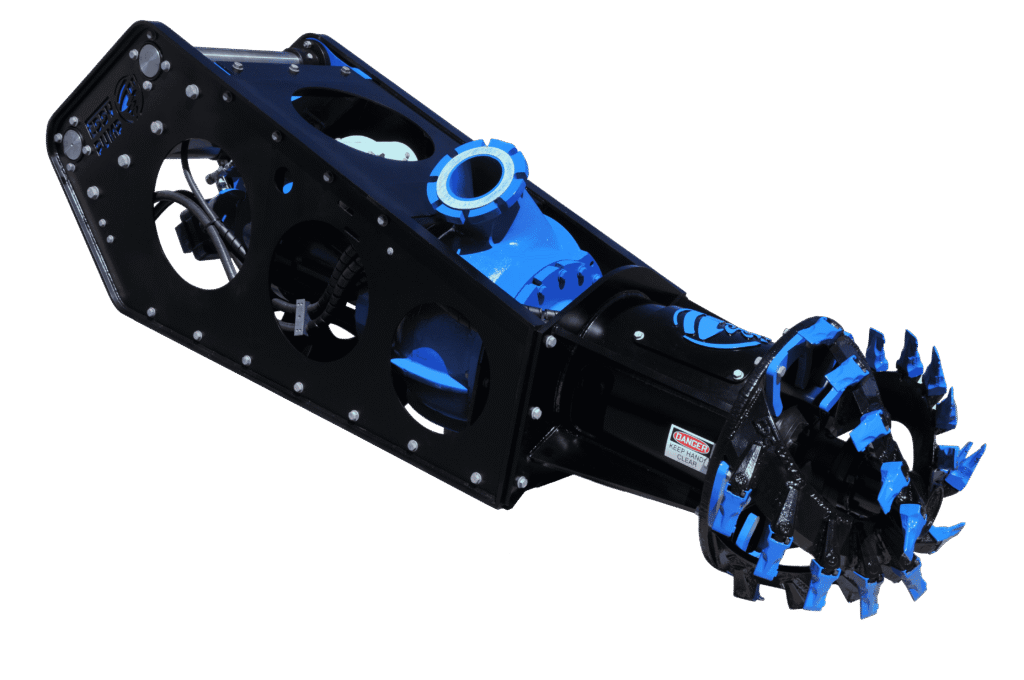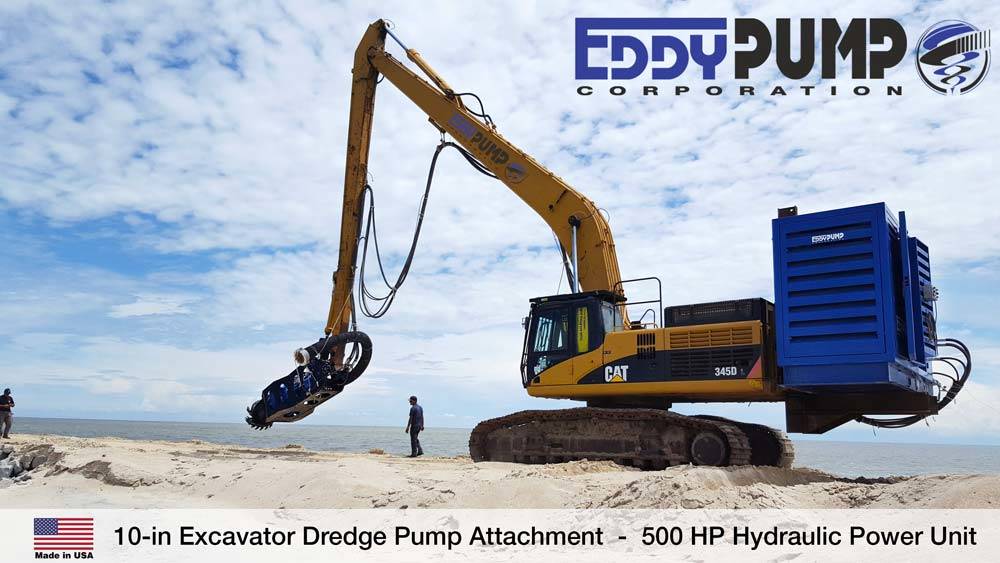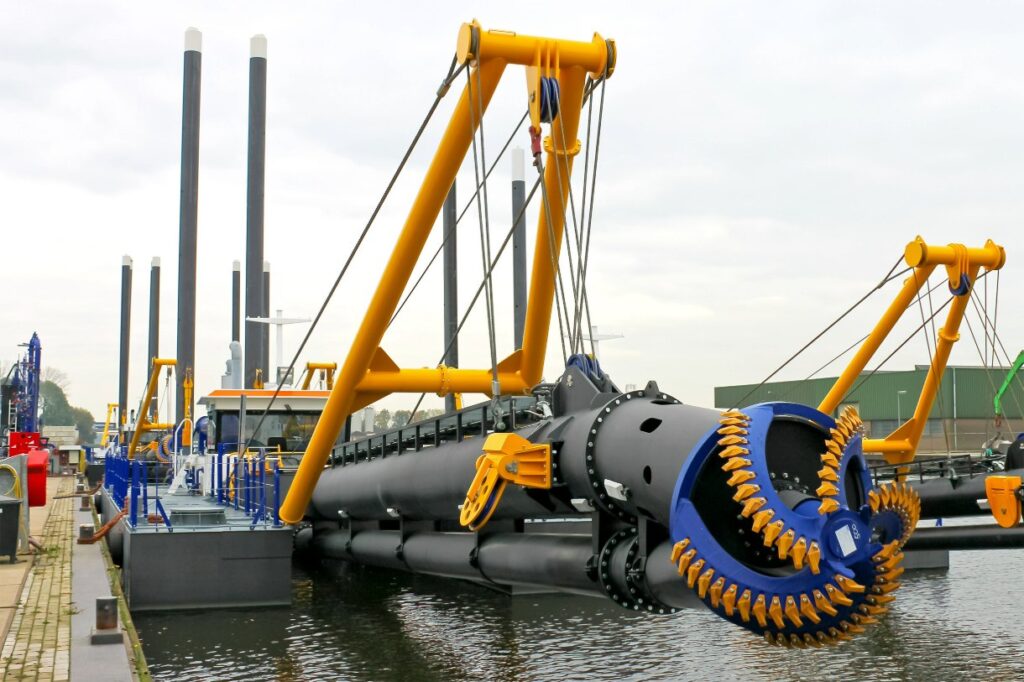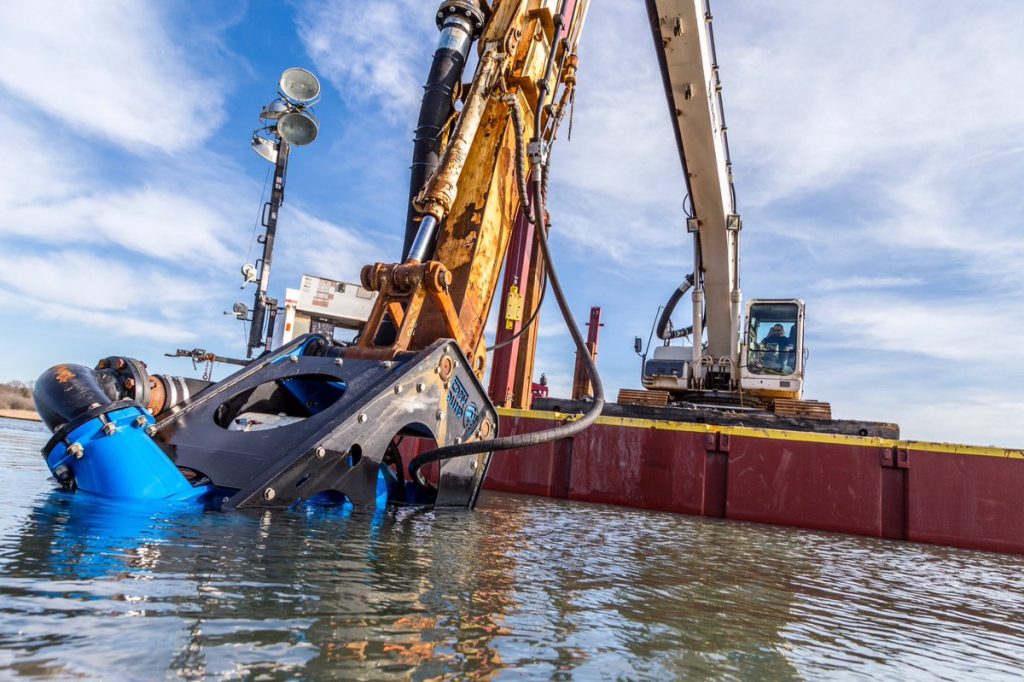In large-scale mining, marine construction, and municipal waterway management, the dredging pump is the core component that determines project efficiency and cost-effectiveness. These pumps are responsible for moving a mixture of water and solids, such as sand, silt, gravel, or industrial byproducts, from the excavation site to a designated discharge area. A well-selected dredging pump ensures uninterrupted material flow, reduces downtime, and directly impacts project timelines.
The choice of pump also influences operational costs. An undersized or inefficient model can lead to frequent maintenance, higher fuel or energy consumption, and delayed project schedules. In contrast, a high-performance pump is engineered to handle challenging conditions, from high solids concentrations to long-distance slurry transport, allowing project managers to achieve faster and more predictable results.
Modern dredging operations rely on specialized solutions like the hydraulic dredge pump, ideal for high-powered, continuous pumping in large-scale reclamation or harbor projects, and the suction dredge pump, designed for efficient sediment removal in rivers, lakes, and mining tailings. Selecting the right configuration for your application not only maximizes throughput but also safeguards long-term return on investment for contractors and municipal authorities alike.
Understanding the Core Function of a Dredging Pump
A dredging pump is the heart of any material removal and transport operation, designed to move water mixed with sediments such as sand, silt, gravel, or industrial slurry. Its core function relies on the principle of centrifugal force: the pump’s impeller spins at high speed, creating suction that draws in the sediment-laden water. This mixture is then propelled through a discharge pipeline to the designated disposal or processing site. By efficiently transferring solids over varying distances, a dredging pump ensures continuous material flow and reduces operational interruptions.
There are several types of dredging pumps, each suited to specific project needs:
- Surface-Mounted Pumps (Horizontal Dredging Pumps): Positioned on barges or land-based platforms, these pumps are commonly used for long-distance slurry transport in large-scale mining and reclamation projects.
- Submersible Pumps: Ideal for confined spaces or underwater operations, these units are deployed directly at the sediment source to maximize suction and reduce priming issues.
- Cutter Suction Dredging Pumps: Equipped with rotating cutter heads, these pumps break down compacted sediments before suction, making them a go-to solution for harbor deepening or removing hardened riverbed deposits.
Real-world project performance is often determined by the right pump selection. For instance, a mining contractor handling high concentrations of tailings may require a hydraulic dredge pump to maintain constant flow and handle abrasive materials without frequent wear. Conversely, a municipal project removing silt from a shallow canal might rely on a suction dredge pump for precision and cost efficiency. Choosing the correct dredging pump configuration directly influences throughput, energy consumption, and the overall return on investment.
A well-engineered hydraulic dredge pump also proves invaluable in operations that demand high power and continuous duty, especially when handling materials over extended distances. Meanwhile, integrating a suction dredge pump into smaller-scale or maintenance projects enhances sediment removal efficiency without excessive energy use. Across all applications, selecting the right dredging pump ensures optimal material movement, reduced downtime, and measurable project cost savings.
Top Features of a High-Performance Dredging Pump

Selecting the right dredging pump is crucial for maximizing operational efficiency, extending equipment life, and delivering measurable ROI on marine, mining, and municipal dredging projects. A truly high-performance pump combines durability, suction efficiency, and hydraulic reliability to handle demanding environments while minimizing downtime. Below are the key features that decision-makers should evaluate before investing in a dredging pump.
Robust Construction and Wear Resistance
A high-performance dredging pump must be built from heavy-duty, wear-resistant materials capable of handling abrasive sand, silt, gravel, and industrial slurry. Impeller material and pump casing durability are critical factors that determine long-term performance under harsh conditions. For example, hardened steel or high-chrome alloys reduce wear and tear during extended operations. By choosing a hydraulic dredge pump or suction dredge pump with a rugged construction, operators benefit from lower maintenance costs, fewer unplanned shutdowns, and better return on investment over the project lifecycle.
Strong Suction and High Solids-Handling Capacity
The suction performance of a dredging pump directly impacts productivity, especially in projects involving high solids concentrations. A well-designed suction dredge pump can handle solids content above 30%, ensuring efficient material removal without clogging or cavitation. In mining tailings management or riverbed excavation, pumps with strong suction minimize the number of passes required to clear sediment. Meanwhile, a hydraulic dredge pump enhances solids-handling capability by delivering consistent suction power even over long distances, boosting overall throughput and reducing operational delays.
Optimized Hydraulic Performance
A truly efficient dredging pump is engineered for optimized hydraulic performance, balancing flow rate, head pressure, and energy consumption. Pump curves and efficiency ratings play a critical role in predicting how the pump will perform under different operating conditions. A hydraulic dredge pump excels in long-distance pumping applications by maintaining flow without excessive energy loss, making it ideal for municipal harbor maintenance or military dredging projects with extended discharge pipelines. Similarly, a suction dredge pump with strong hydraulic performance ensures sediment is moved consistently, improving both productivity and energy efficiency.
Long Pumping Distance and Booster Compatibility
For large-scale reclamation or offshore projects, the ability of a dredging pump to transport slurry over hundreds or even thousands of feet is essential. Pumps designed for long-distance operations often integrate seamlessly with booster pumps, extending their reach without compromising flow. A hydraulic dredge pump paired with booster stations is commonly deployed in land reclamation or mining operations, where repositioning equipment can be costly and time-consuming. In shallower or smaller-scale environments, a suction dredge pump provides reliable material transport without the need for constant equipment adjustments, ultimately contributing to faster project completion and reduced labor costs.
Easy Maintenance and Serviceability
Maintenance accessibility is a key consideration for procurement and operations teams. A high-quality dredging pump should feature a modular design with quick access to the impeller and replaceable wear components. Reduced downtime leads directly to increased uptime and better project economics. Both hydraulic dredge pumps and suction dredge pumps are designed for easy servicing to ensure that field teams can perform inspections, part replacements, and preventive maintenance without significant delays, extending the overall life of the equipment.
Power Versatility and Deployment Flexibility
Different projects require different power solutions, and a high-performance dredging pump should be adaptable to various jobsite conditions. Options include diesel-driven units for remote or high-power applications, electric models for energy-efficient and environmentally sensitive projects, and hydraulic dredge pumps for continuous heavy-duty operations. Deployment flexibility is also critical: barge-mounted pumps are common for mining and reclamation projects, submersible pumps excel in pond or lagoon dredging, and cutter-equipped suction dredge pumps are preferred for compacted sediment removal. By aligning the pump’s power source and configuration to the site’s operational constraints, decision-makers can maximize productivity and reduce operating costs.
Evaluating Dredging Pumps for Real-World Applications

Choosing the right dredging pump requires a clear understanding of project-specific requirements, including flow rate, total dynamic head, sediment type, and discharge distance. Proper evaluation ensures that the pump can handle the material efficiently without causing excessive wear or unnecessary energy consumption. Aligning the pump’s capabilities with project conditions is critical for achieving both operational reliability and cost efficiency.
In practice, different environments demand different pump configurations. Here are three common real-world scenarios:
- Mining Tailings Management
Mining operations often involve high-density slurries and abrasive tailings that can quickly wear down standard equipment. A suction dredge pump is ideal for these conditions because of its ability to handle high solids concentrations with minimal clogging. Deploying a dredging pump with durable impellers and robust wear resistance reduces downtime and maximizes material throughput. - Harbor Maintenance and Coastal Projects
Long-distance slurry transport is a key requirement in harbor and naval dredging operations. A hydraulic dredge pump is best suited for these scenarios due to its strong flow performance over extended discharge pipelines. When paired with booster stations, the dredging pump can efficiently move sediment for land reclamation, channel deepening, or routine harbor maintenance while minimizing fuel consumption and repositioning needs. - Municipal Pond or Canal Dredging
Shallow water environments like stormwater ponds or urban canals require equipment that can access tight areas without extensive mobilization. A submersible hydraulic dredge pump or a cutter-equipped suction dredge pump provides efficient sediment removal in these confined spaces. These solutions improve water flow, restore capacity, and extend the maintenance interval for municipal infrastructure.
By carefully assessing the application and aligning it with the proper dredging pump type, project managers can achieve consistent performance, protect equipment from premature wear, and enhance overall project ROI.
ROI and Lifecycle Considerations for Procurement Heads

For procurement leaders and project decision-makers, the real value of a dredging pump is measured not only by its purchase price but also by its long-term impact on operational efficiency and maintenance costs. Investing in a high-performance pump reduces downtime, minimizes emergency repairs, and extends the overall service life of critical dredging equipment.
When evaluating options, consider the total cost of ownership (TCO) rather than focusing solely on upfront cost. A reliable hydraulic dredge pump can move higher volumes of slurry more efficiently, resulting in lower energy usage per cubic yard of material transported. Similarly, a well-selected suction dredge pump is less prone to clogging or excessive wear, which reduces the frequency of costly part replacements and unplanned maintenance stops.
Over the lifecycle of a dredging project, pumps engineered for durability and high solids-handling capability deliver measurable ROI. Projects benefit from fewer operational interruptions, optimized fuel or power consumption, and longer intervals between overhauls. For procurement heads, prioritizing a dredging pump based on performance, wear resistance, and maintenance accessibility ensures long-term cost savings and predictable budgeting.
Driving Operational Success Through Smart Pump Selection
Selecting the right dredging pump is a critical decision that directly impacts project timelines, operational efficiency, and overall cost management. By focusing on features such as robust construction, high solids-handling capacity, optimized hydraulic performance, and ease of maintenance, engineering managers and procurement teams can ensure reliable and cost-effective operations.
Whether the project involves long-distance slurry transport with a hydraulic dredge pump or high-solids applications using a suction dredge pump, aligning pump specifications with real-world requirements is key to maximizing ROI and minimizing lifecycle costs.
Explore DredgeFlow’s advanced dredging pump solutions to enhance your project efficiency, extend equipment life, and achieve measurable returns on investment.


